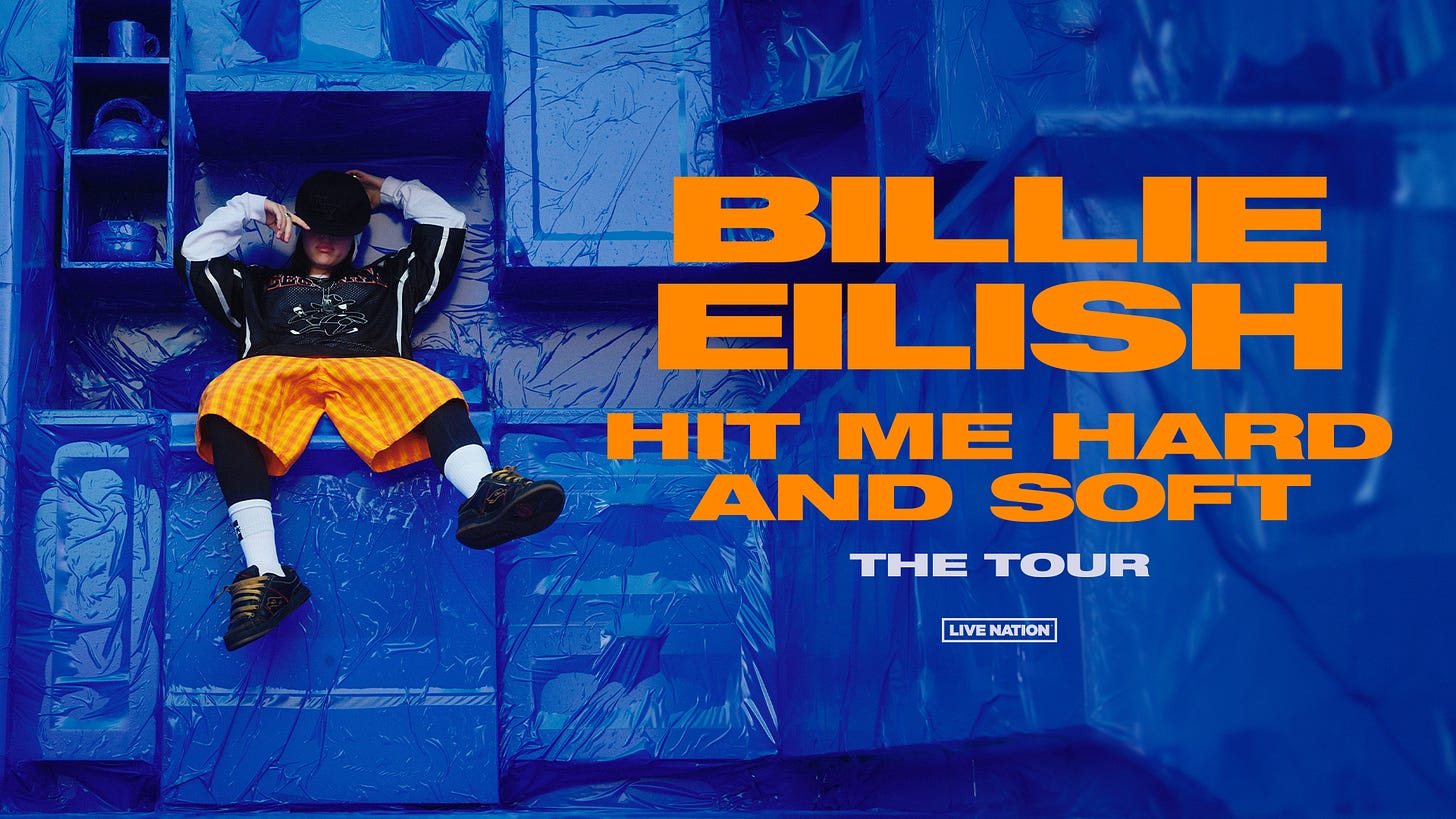The Art of Collective Memory: Notes from an Unexpected Concert Experience
Human Patterns in the Machine Age | Issue #06
Last night, I found myself in a remarkable moment: standing among 15,000+ people in perfect silence. Not the kind of experience you expect at a concert, especially not a Billie Eilish show. Yet there we were, collectively holding our breath as she prepared to create a live loop of her voice.
I'll admit - I was there primarily as a parent, accompanying my teenager who's a dedicated fan. What I didn't expect was to witness a masterclass in multisensory experience design, one that would leave me with a newfound appreciation not just for Eilish's music, but for the art of creating collective memory.
The Choreography of Shared Experience
That moment of silence wasn't just about recording - it was about transformation. With a few words, Eilish shifted the entire audience from spectators to participants. She didn't just ask for quiet; she invited 15,000 people to become part of the creative process. We weren't just watching a performance anymore - we were helping create it.
This participation wasn't limited to silence. Throughout the show, the boundary between performer and audience constantly shifted. The stage itself became a canvas, transforming into a display screen filled with art and video. At times, the audience would appear on screen, seeing themselves as part of the performance. The message was clear: this wasn't just Billie's show - it belonged to all of us.
The Power of Perspective
In another brilliant move, Eilish would occasionally take control of the camera herself, filming her own performance for the big screens. This simple shift in perspective changed everything. Suddenly, we weren't just watching a concert - we were seeing it through her eyes, experiencing her perspective of the moment we were all sharing.
These perspective shifts created layers of experience: the live performance in front of us, the artist's-eye view on screen, the crowd's reaction, all happening simultaneously. Each layer added depth to the memory being created.
The Architecture of Memory
As I stood there, I found myself consciously pausing to let moments sink in. There's something powerful about recognizing, in real-time, that you're experiencing something you'll remember for a long time. The show's design seemed to understand this, creating natural moments for reflection amidst the energy.
The multisensory elements - visual, auditory, social - weren't just random additions. They were carefully orchestrated to create a complete experience. The stage design, lighting, sound, and audience interaction all worked together to craft something larger than the sum of its parts.
Beyond Entertainment
What struck me most wasn't the technical excellence or even the music - it was how the experience created a temporary community of 15,000 people. For a few hours, we shared something unique: We weren't just watching the same show; we were participating in the same story.
This is perhaps the true art of collective memory - creating moments that resonate not just individually, but collectively. It's about crafting experiences that transform a group of strangers into participants in a shared narrative.
As we left the concert, I thought about how rare these moments of collective experience have become in our digital age. Yet perhaps that's what makes them even more powerful when they do occur - these brief windows where thousands of people share not just a space, but a moment in time.
It was a reminder that the most memorable experiences often come when we least expect them, and sometimes the best way to appreciate them is to simply pause and let them sink in.
🙏 Thank you for reading Strategic Humanist. If you enjoyed this article, consider subscribing for future articles delivered straight to your inbox. Or share the article with others who may find it valuable.
🤔 Curious about the Strategic Humanist?
I'm a lead CX strategist that helps Fortune 500 companies craft customer-focused solutions that balance business priorities, human needs, and ethical technology standards. My work focuses on keeping humans at the center while helping organizations navigate digital transformation.
Connect with me on LinkedIn to explore more insights on human-machine collaboration, customer experience, and ethical applications of AI.






